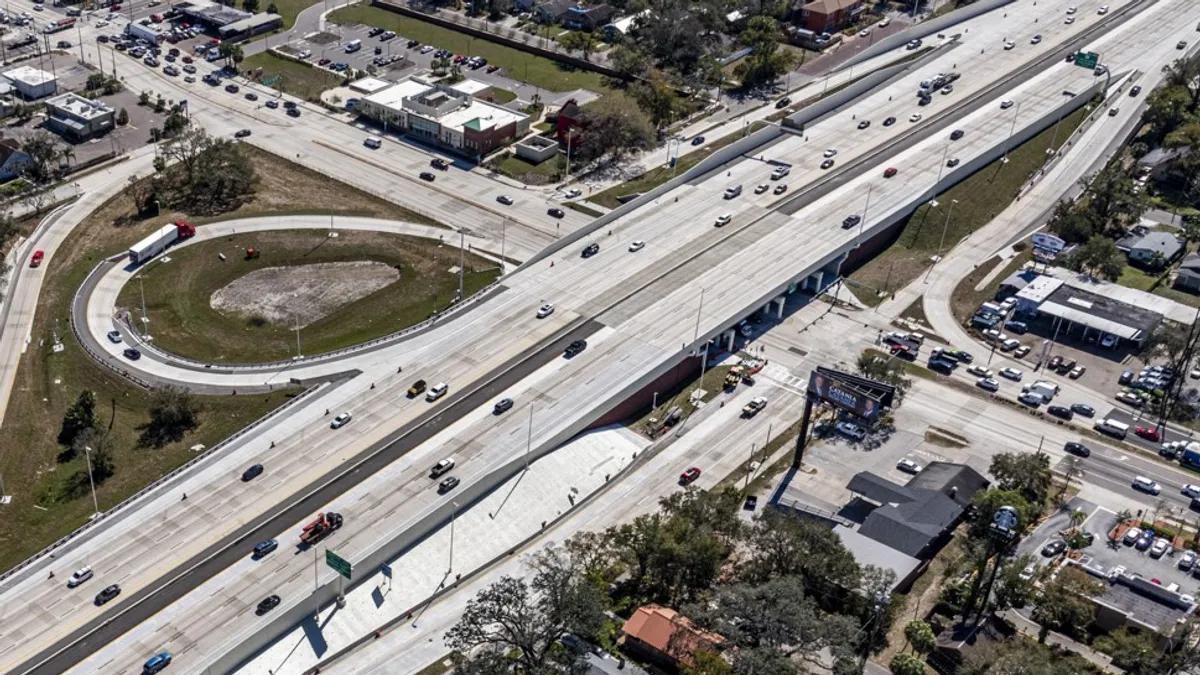Mark Bishop is director of managed services at United Rentals, which claims to be the largest equipment rental company in the world with locations in 49 U.S. states and all Canadian provinces.
For successful infrastructure projects, it’s vital for contractors to supplement the equipment they own with rentals of earth movers, light towers and other machines. But to do this efficiently they must know which equipment is on rent, how it is being utilized, where it is located, when it should be returned — and not least of all, how much it’s costing. A lack of information in these areas creates a blind spot that can sap a company’s resources.
Data about equipment rentals can be just as important to your bottom line as the equipment itself, but accessing it requires a breakdown of silos.
Demolish operational silos
Construction business operations involve countless moving parts not just on site, but also in the office — in the effort of managing contracts, parts and supplies, plans, logistics, maintenance and reporting against time and cost targets. These activities have direct impacts on cost control, worker safety, risk mitigation and more.
Due to that complexity, contractors have long established enterprise resource planning systems to eliminate silos across the business by bringing all operations under the same umbrella.
Managers want to tap into and process the data produced by fleet technologies such as sensors, GPS telematics, and cloud-based software and services. But infrastructure contractors tend to be on multiple active jobsites at a time, leading to a false sense of how equipment is being utilized. Contractors are also juggling data from both owned and rented equipment.
In some cases, contractors are working with business partners to integrate these data flows into a single “system of record” for fleet management, allowing software to track both owned and rented equipment for a more effective, holistic view. Such a method makes it easier to get a handle on the total scope of equipment units, including their location, true cost and utilization. This enables contractors to implement a productive rental strategy that reduces waste and duplication and allows for informed decisions about future fleet purchases.
With a fleet management system in place, the next step is to harness the wealth of data that resides in the system by connecting it with an ERP system to create a seamless procure-to-pay process. This injection of equipment fleet data into an ERP database eliminates a major silo for contractors. If the fleet management system has been designed to facilitate ERP connectivity without custom programming, so much the better.
Integrate procure-to-pay with rentals
Integration embeds the equipment rental process within the financial modules of an ERP system. It can include front-end processes and the systems supporting them — such as order entry and purchase-order generation — as well as back-end processes such as billing and payment.
The rationalization of equipment rental and ERP processes creates major efficiencies. For example, depending on the software, a contractor can validate equipment rentals at the point of order entry by purchase order and line item as well as by work order, cost center or network number; track purchase order value at order entry and throughout the rental lifecycle; and receive alerts about needed purchase order increases and rental statuses.
This also helps construction firms reduce times and expenses associated with paying rental invoices because it limits the risk that inaccurate information is entered into accounts payable. Inaccurate data alone can drive up invoice processing costs up by eight or ten times the appropriate level.
The advantages of fleet management and ERP integration extend beyond the finance and procurement departments, though. Construction project managers stand to realize significant benefits from access to telematics data and analytics. This information can be used to maximize machine utilization and ensure that scheduled maintenance on rental equipment is performed to specification.
With cross-system functionality, telematics provides visibility into equipment runtime, utilization and location, and often alerts for fuel and servicing of machines. Leveraging telematics technology can mean managing operations more efficiently and effectively. Eliminating manual processes with system integration can result in more accurate data, which in turn eliminates billing or invoicing errors for customers.
Turbocharging ERP
Managers that effectively integrate equipment rental processes into ERP turbocharge their enterprise systems to achieve greater business results. They gain a measurable improvement in project performance as well as in bidding, forecasting, margin protection, labor efficiency and problem resolution. These companies reduce the time and expense associated with paying invoices.
Contractors achieve these improvements because they optimize all their equipment, not only their owned gear or their rented gear. They also create more efficient management processes since staff no longer need to bounce between multiple systems and data sources to gain total visibility of equipment utilization and costs. Integration between the systems eliminates data validation and accuracy issues experienced in operational silos and data sharing is improved, making it easier to manage rented equipment and its utilization across headquarters, field offices and jobsites.




















